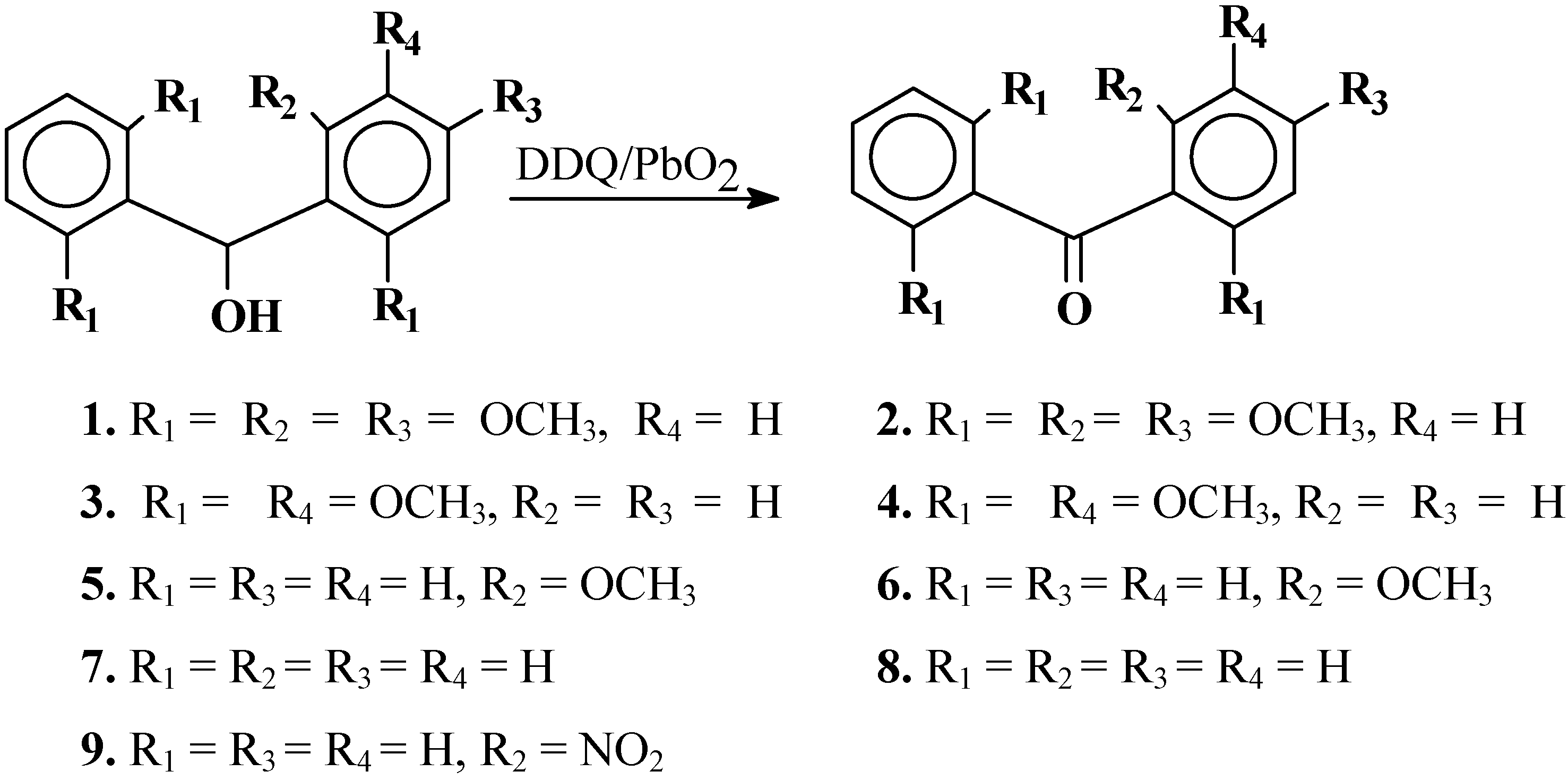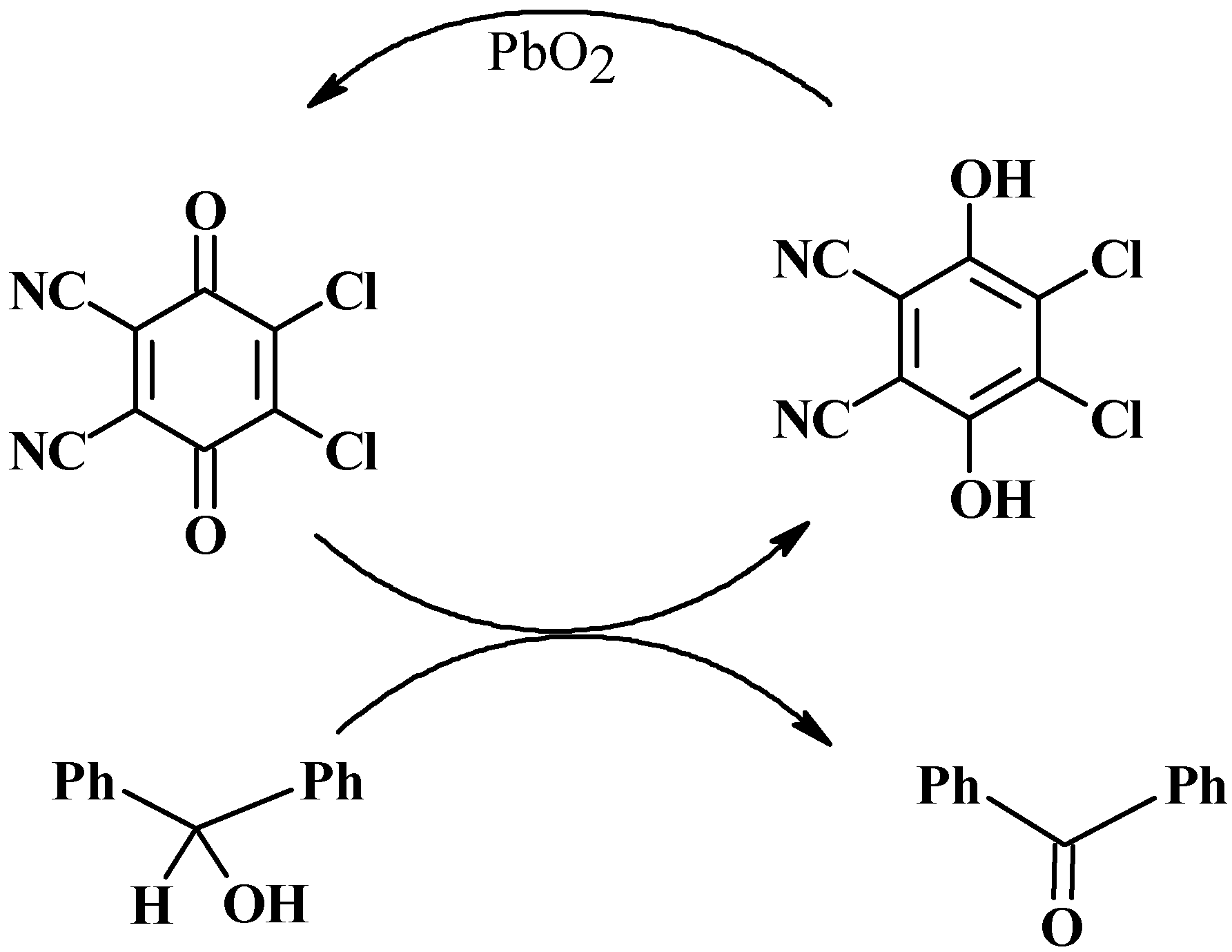DDQ/PbO2: a Novel Oxidation System for Hindered Electron Rich Benzhydrols
Abstract
:Introduction

Results and Discussion

Conclusion
Experimental
General
Typical procedure of oxidation of benzhydrols
2,4,6,2',6'-Pentamethoxybenzophenone (2)
2,6,2',5'-Tetramethoxybenzophenone (4)
2-Methoxybenzophenone (6)
Benzophenone (8)
Acknowledgements
References and Notes
- Banerji, A.; Nayak, S. K. J. Chem. Soc., Chem. Commun. 1991, 1432.
- Walker, D.; Hiebert, J. D. Chem. Rev. 1967, 67, 153. [PubMed]
- Cardillio, G.; Cricchio, R.; Merlini, L. Tetrahedron 1968, 24, 4825.
- Iwamura, J.; Hirao, N. Tetrahedron Lett. 1973, 2447.
- (a) Müller, P.; Rocek, J. J. Am. Chem. Soc. 1971, 94, 2716. ; (b) Stoos, F.; Rocek, J. J. Am. Chem. Soc. 1972, 94, 2719.
- Kim, K. H.; Grunewald, G. L. Org. Prep. Proced. Int. 1976, 8, 141.
- Deshpande, A. D. Ph.D. Thesis, University of Bombay, Bombay, 1992.
- Khan, M. K. A.; Morgan, K. J. J. Chem. Soc. 1964, 2579.
- Samples Availability: Available from the authors.
© 2000 by MDPI (http://www.mdpi.org). Reproduction is permitted for noncommercial purposes.
Share and Cite
Kalena, G.P.; Jadhav, S.M.; Banerji, A. DDQ/PbO2: a Novel Oxidation System for Hindered Electron Rich Benzhydrols. Molecules 2000, 5, 240-244. https://doi.org/10.3390/50300240
Kalena GP, Jadhav SM, Banerji A. DDQ/PbO2: a Novel Oxidation System for Hindered Electron Rich Benzhydrols. Molecules. 2000; 5(3):240-244. https://doi.org/10.3390/50300240
Chicago/Turabian StyleKalena, G. P., S. M. Jadhav, and A. Banerji. 2000. "DDQ/PbO2: a Novel Oxidation System for Hindered Electron Rich Benzhydrols" Molecules 5, no. 3: 240-244. https://doi.org/10.3390/50300240



